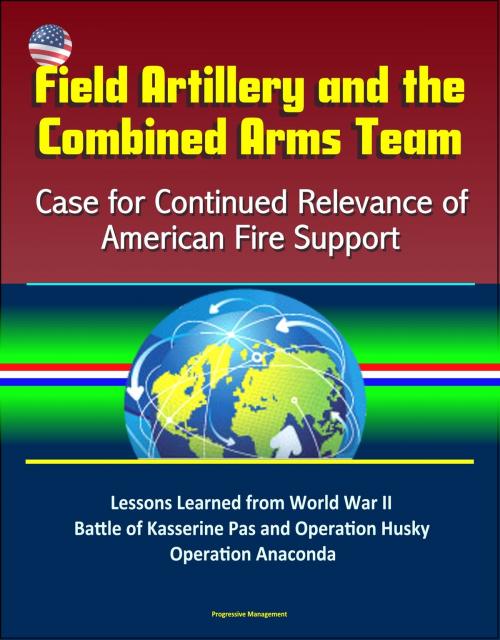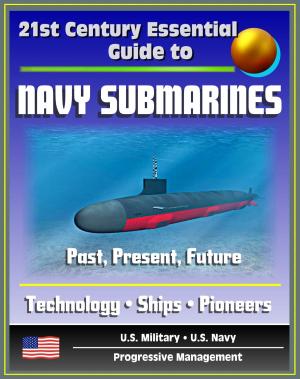Field Artillery and the Combined Arms Team: Case for Continued Relevance of American Fire Support – Lessons Learned from World War II Battle of Kasserine Pas and Operation Husky, Operation Anaconda
Nonfiction, History, Military, World War II| Author: | Progressive Management | ISBN: | 9781370168613 |
| Publisher: | Progressive Management | Publication: | February 20, 2017 |
| Imprint: | Smashwords Edition | Language: | English |
| Author: | Progressive Management |
| ISBN: | 9781370168613 |
| Publisher: | Progressive Management |
| Publication: | February 20, 2017 |
| Imprint: | Smashwords Edition |
| Language: | English |
This excellent report has been professionally converted for accurate flowing-text e-book format reproduction. As US Army units begin conducting decisive action training in combat training centers, they must strengthen core field artillery proficiencies and relearn how to employ artillery successfully as part of a combined arms team in an expeditionary environment. To do so requires an appreciation of the field artillery fire support system's unique capability and its continued importance for future combat operations. Following World War I, US Army artillery officers developed the modern artillery doctrine and organization that remains relatively unchanged to this day. This doctrine developed from the lessons learned of the Great War and the ingenuity of the interwar period, and earned validation through war hardening and proper application in operations such as the Kasserine Pass battles and Operation Husky during 1943 of World War II. In March 2002 during the Battle of Shah-I-Kot in Operation Anaconda, operational planners sought to replace field artillery with airpower and mortars rather than employ it as an essential member of the combined arms team. This decision led to fateful results in the opening days of the operation. In future operations, the US military must not leave the artillery at home-station, or it will risk losing the ability to mass fires effectively, understand the operational environment, continually seek positions of advantage, and strive for simultaneous and complimentary effects.
From March 21 to April 10, 2003, field artillery units of the US Army's V Corps provided timely and accurate fire support to maneuver elements during the initial invasion into Iraq as part of Operation Iraqi Freedom. Starting with destruction fires against multiple observation posts along the Iraq-Kuwait border, field artillery elements maneuvered alongside infantry and armor forces to provide essential fire support against Saddam Hussein's Army in the Iraqi desert and urban areas. Operating in the restrictive Euphrates River Valley and providing long range indirect fire support during massive sandstorms that restricted air support, artillery demonstrated its role as a key part of the combined arms team during an initial operation lasting twenty-one days and spanning over 720 kilometers. Following the conclusion of major combat operations, the US Army shifted to stability operations and implemented a counterinsurgency (COIN) strategy. Field artillerymen's guns remained at forward observation posts and performed fire missions consisting primarily of static counter fire operations. Given the limited need for such tasks, artillery units regularly conducted non-standard missions to include patrolling, base defense, and cordon and search operations. In Afghanistan, artillery units found themselves conducting similar missions, although indirect fire support to the maneuver force through counter fire and destructive fires in support of troops in contact constituted the primary mission.
This excellent report has been professionally converted for accurate flowing-text e-book format reproduction. As US Army units begin conducting decisive action training in combat training centers, they must strengthen core field artillery proficiencies and relearn how to employ artillery successfully as part of a combined arms team in an expeditionary environment. To do so requires an appreciation of the field artillery fire support system's unique capability and its continued importance for future combat operations. Following World War I, US Army artillery officers developed the modern artillery doctrine and organization that remains relatively unchanged to this day. This doctrine developed from the lessons learned of the Great War and the ingenuity of the interwar period, and earned validation through war hardening and proper application in operations such as the Kasserine Pass battles and Operation Husky during 1943 of World War II. In March 2002 during the Battle of Shah-I-Kot in Operation Anaconda, operational planners sought to replace field artillery with airpower and mortars rather than employ it as an essential member of the combined arms team. This decision led to fateful results in the opening days of the operation. In future operations, the US military must not leave the artillery at home-station, or it will risk losing the ability to mass fires effectively, understand the operational environment, continually seek positions of advantage, and strive for simultaneous and complimentary effects.
From March 21 to April 10, 2003, field artillery units of the US Army's V Corps provided timely and accurate fire support to maneuver elements during the initial invasion into Iraq as part of Operation Iraqi Freedom. Starting with destruction fires against multiple observation posts along the Iraq-Kuwait border, field artillery elements maneuvered alongside infantry and armor forces to provide essential fire support against Saddam Hussein's Army in the Iraqi desert and urban areas. Operating in the restrictive Euphrates River Valley and providing long range indirect fire support during massive sandstorms that restricted air support, artillery demonstrated its role as a key part of the combined arms team during an initial operation lasting twenty-one days and spanning over 720 kilometers. Following the conclusion of major combat operations, the US Army shifted to stability operations and implemented a counterinsurgency (COIN) strategy. Field artillerymen's guns remained at forward observation posts and performed fire missions consisting primarily of static counter fire operations. Given the limited need for such tasks, artillery units regularly conducted non-standard missions to include patrolling, base defense, and cordon and search operations. In Afghanistan, artillery units found themselves conducting similar missions, although indirect fire support to the maneuver force through counter fire and destructive fires in support of troops in contact constituted the primary mission.















